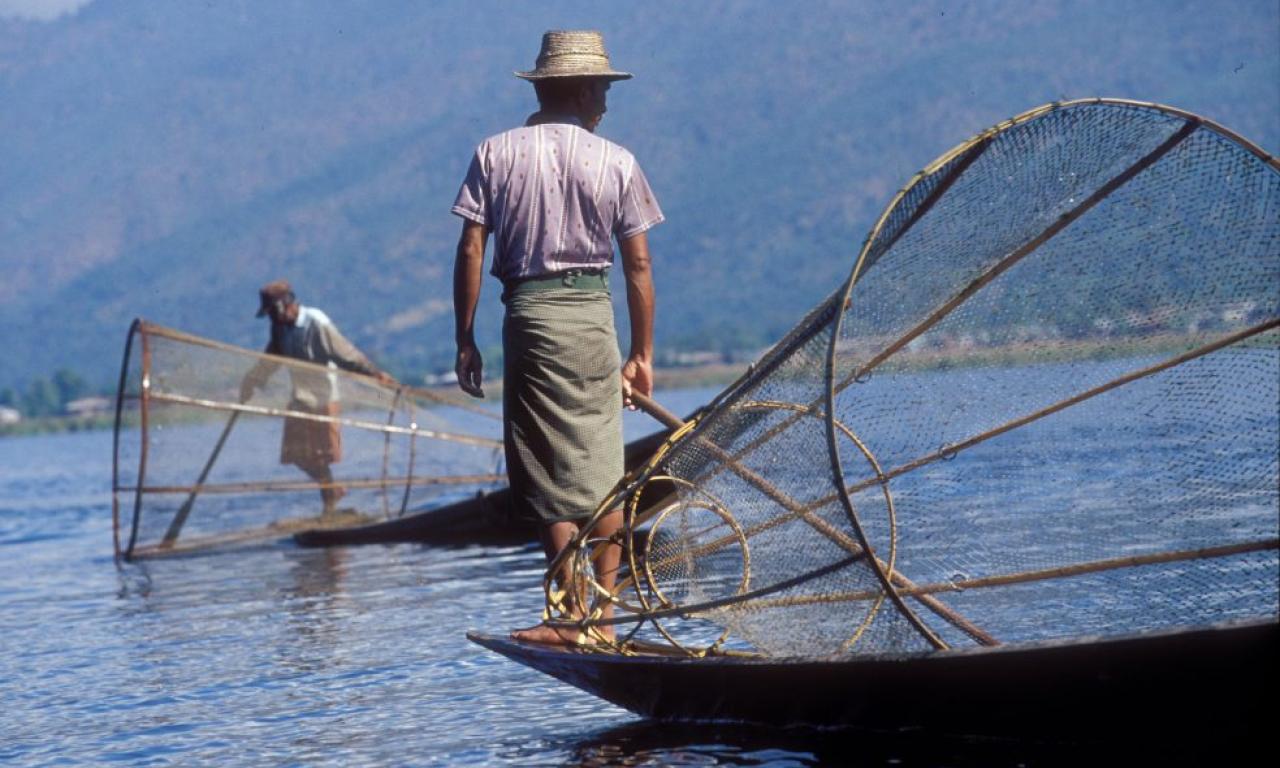
Kathryn J Fiorella is an Assistant Professor in the Master of Public Health Program and Department of Population Medicine and Diagnostic Sciences at Cornell University.
This blog post is based on a recently published paper in Science Advances. Data and analysis code used in our analyses are available on Dataverse.
Climate change is projected to have a tremendous effect on our coastal and inland habitats, the aquatic species that use them, and the people that rely on them. Particularly for global small-scale fishers that rely directly on aquatic systems, climate change will play a significant role in shaping their access to food and productive livelihoods.
Much of the research that seeks to understand climate impacts on fisheries has focused on impacts on fish catch. Catch is ultimately a product of both the availability of aquatic foods in the ecosystem, and the effort people put forth to harvest those aquatic foods. While we have made increasing progress in understanding how climate change will affect aquatic ecosystems and their productivity, we understand far less about how small-scale fishers may change their behavior. Considering these together – both the human system and the environmental one – will be key to understanding and mitigating the impacts of climate change on small scale fishers.
In response to climate change, more people may fish, or fewer may fish. They may shift the balance of their activities and spend more time farming than fishing, or less. They may alter the strategies they use (e.g., fishing in different ways, planting new crops that require more or less labor). They may change who in the household fishes. Ultimately, people may harvest more aquatic foods – or fewer.
As people change their behavior, they may respond directly to warmer temperatures that make certain activities uncomfortable, for example, working hard in mid-day on their farms. Perhaps more likely, however, they will also respond to their perceptions of which aspects of their livelihoods most need their efforts or are most productive. Moreover, while aggregate climate change impacts are overwhelmingly projected to be negative, in individual ecosystems the impact of warming temperatures on dynamics like crop productivity or fisheries yields is ambiguous. For example, while warming temperatures from 1930-2010 negatively affected 19 fish stocks, they also positively affected 9 fish stocks.
To examine the question of how temperature affects people and ecosystems, we focused on small-scale fishers and fish in inland Cambodia [FIGURE—reproduce Fig 1 from Sci Advances]. We found that rising temperatures had a limited effect on fish catch, but made people less likely to fish. We find this pattern for not only fish, but also the harvest of other aquatic animals (like snakes and frogs) and aquatic plants.
Cambodians rely on fishing for their income, with particularly high reliance in the regions surrounding the Tonle Sap Lake where WorldFish works. Cambodians also consume some of the largest quantities of fish per capita. And, Cambodia’s fisheries are among the most biodiverse globally, second only to the Amazon.
WorldFish in the Feed the Future Cambodia – Rice Field Fisheries Phase I project has implemented a series of community-managed protected areas, called Community Fish Refuges. These refuges are designed to improve fish production, and buffer the impacts of climate and other environmental changes. In the process of monitoring the refuges, WorldFish followed 400 households over 3 years (19 time points).
In this research study, we paired household survey data with remotely sensed data on temperature. As rainfall and flooding are the most important drivers of fishery productivity in this system, we control for these factors to isolate effects of temperature. We use a multi-part analysis to examine the effects of rising temperatures on people’s behavior and indirectly triangulate the effects on availability of fish in the ecosystem. We accounted for the ways past temperature and rainfall likely affect the current fish populations with lagged variables and allow for nonlinear effects of temperature. [Link to full methodological details available in the manuscript and supplement]
We first analyzed how temperature affects household fishing participation – meaning whether or not people fish at all. We find that with rising temperatures, participation in fishing falls and that the effect is stronger in higher temperature ranges. Among those who choose to fish, we also examined the time households spend fishing and fishing gear choice but find they are not affected by temperature.
We next examined households’ fish catch. Catch is at once a function of fishing effort, meaning ‘how hard are people trying to catch fish?’, and fish availability, meaning ‘how many fish are there to be caught?’ We analyzed the effects of temperature on fish catch, which showed no effect. Then we compared those findings to the effects of temperature on fish catch while controlling for fishing participation, time spent fishing, and gear choice. This analysis allowed us to indirectly isolate the ecological effect of temperature of fish populations. We found that temperature rises slightly increased fish catch. This result is comparable to an increase in catch-per-unit-effort, a metric commonly used to monitor fish stocks.
When we examined the harvest of aquatic plants and other aquatic animals, we saw a strikingly similar pattern. These resources are also widely used for food and income, and households in our study not only caught nearly 5kg of fish/week, they also harvested an average 1.3kg of aquatic animals, such as snakes or frogs, and 1.6kg of aquatic plants each week. When we controlled for harvest participation, the harvest of both plants and animals was greater than without controls, suggesting a consistent ecological and behavioral mechanism at play across aquatic food systems.
The livelihoods of Cambodian households in our study are highly complex, as is the case for many global smallholders. Households are at once engaged in rice farming, fishing, and small businesses. They often have household members who are working in nearby cities and sending money home. Given the relative increases in the productivity of aquatic systems at the same times that households are devoting less effort to harvesting fish, aquatic plants and other aquatic animals suggests that rising temperatures are pulling their attention in another direction. Although we did not test what may be driving these shifts, it is plausible that agricultural demands, such as weed pressure, or migration to urban areas may increase with temperature.
If we failed to account for fisher behavioral responses to higher temperatures, it would appear that temperature had no effect on fish catch. However, we actually find that fewer households were fishing or harvesting aquatic plants and animals. Appreciating how warming temperatures affect people’s behavior could ultimately be critical to understanding the aggregate effects of climate on well-being of vulnerable communities.
Our results underscore the importance of integrating behavior into climate change modeling. To accurately predict the impacts of climate change, the effects on ecological systems and the people that use them must be integrated. Incorporating human behavioral responses to changing environmental conditions will be fundamental to determining how climate change affects rural livelihoods, food production, and food access.
